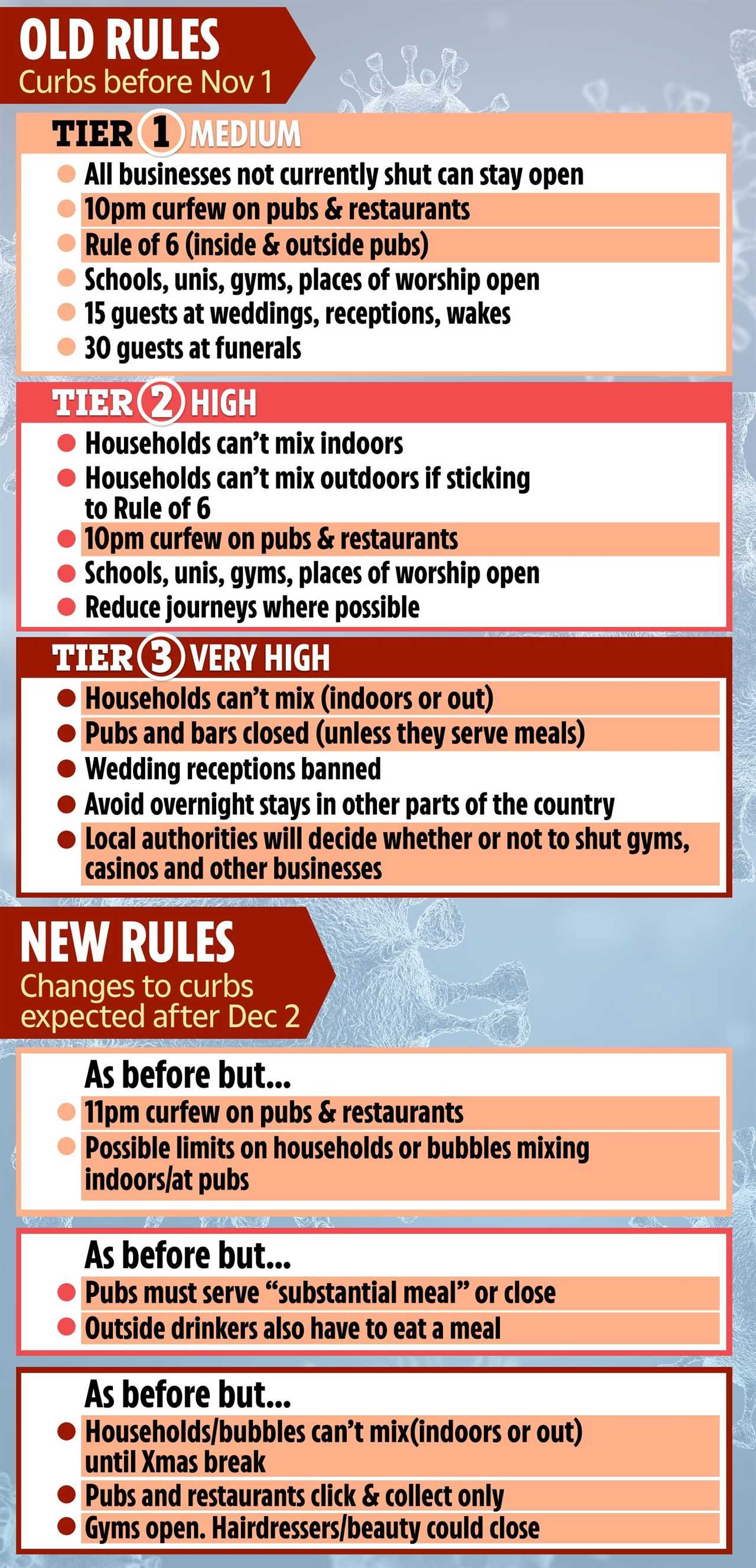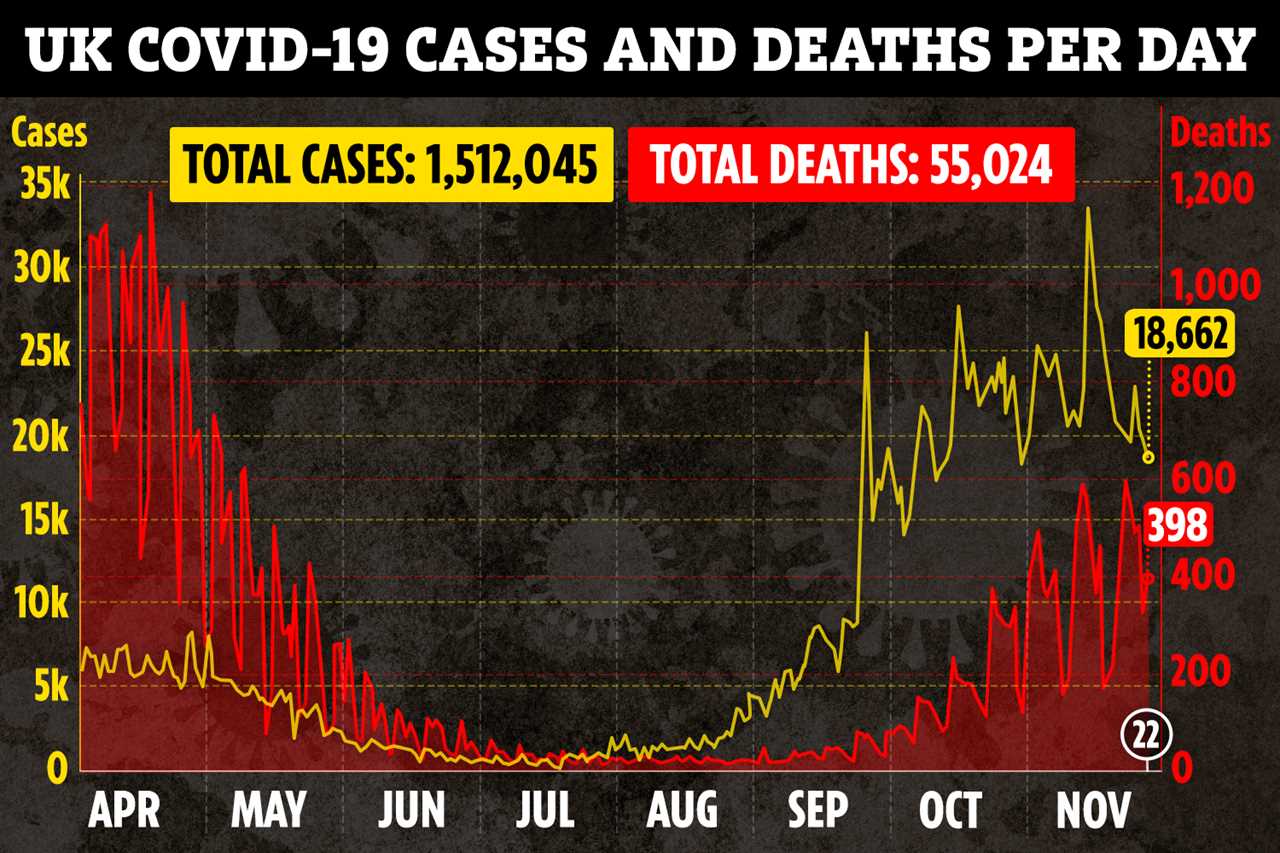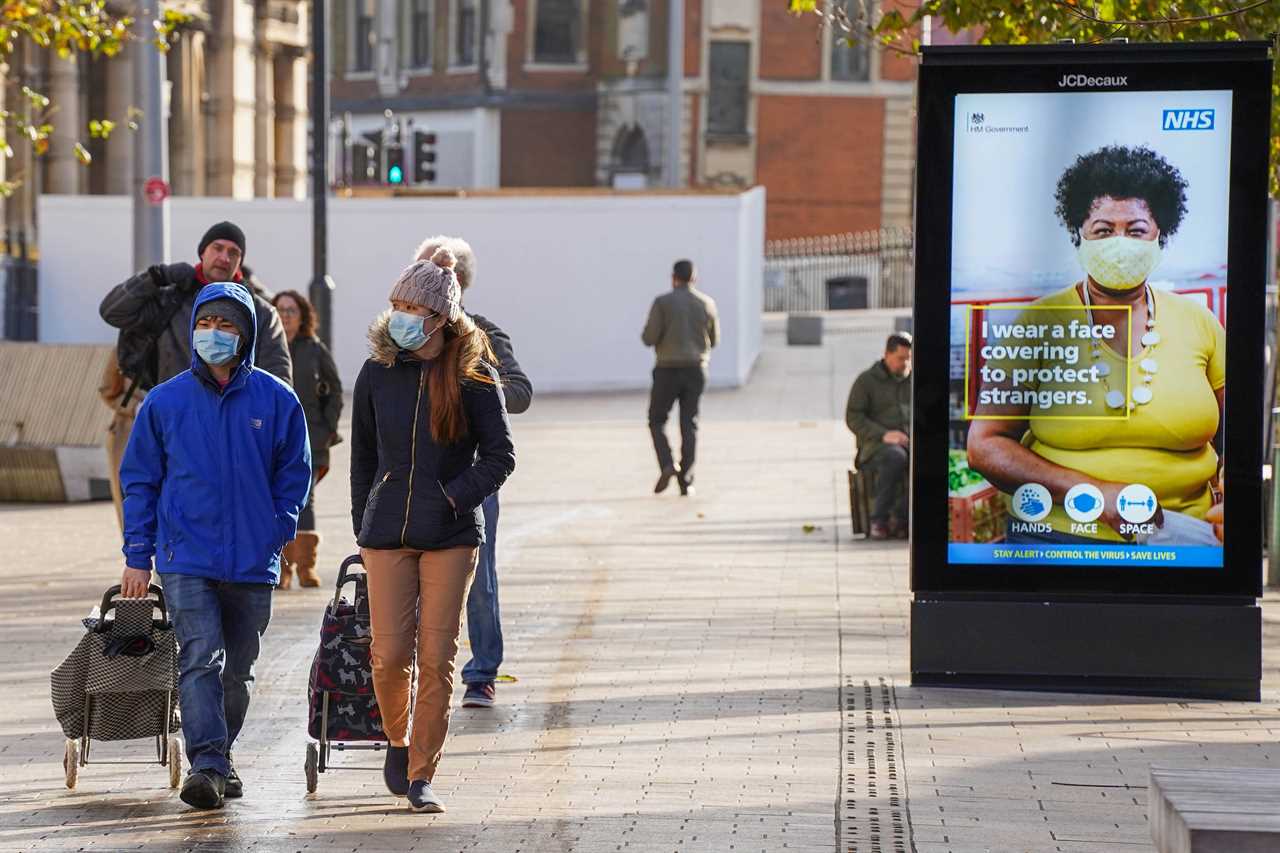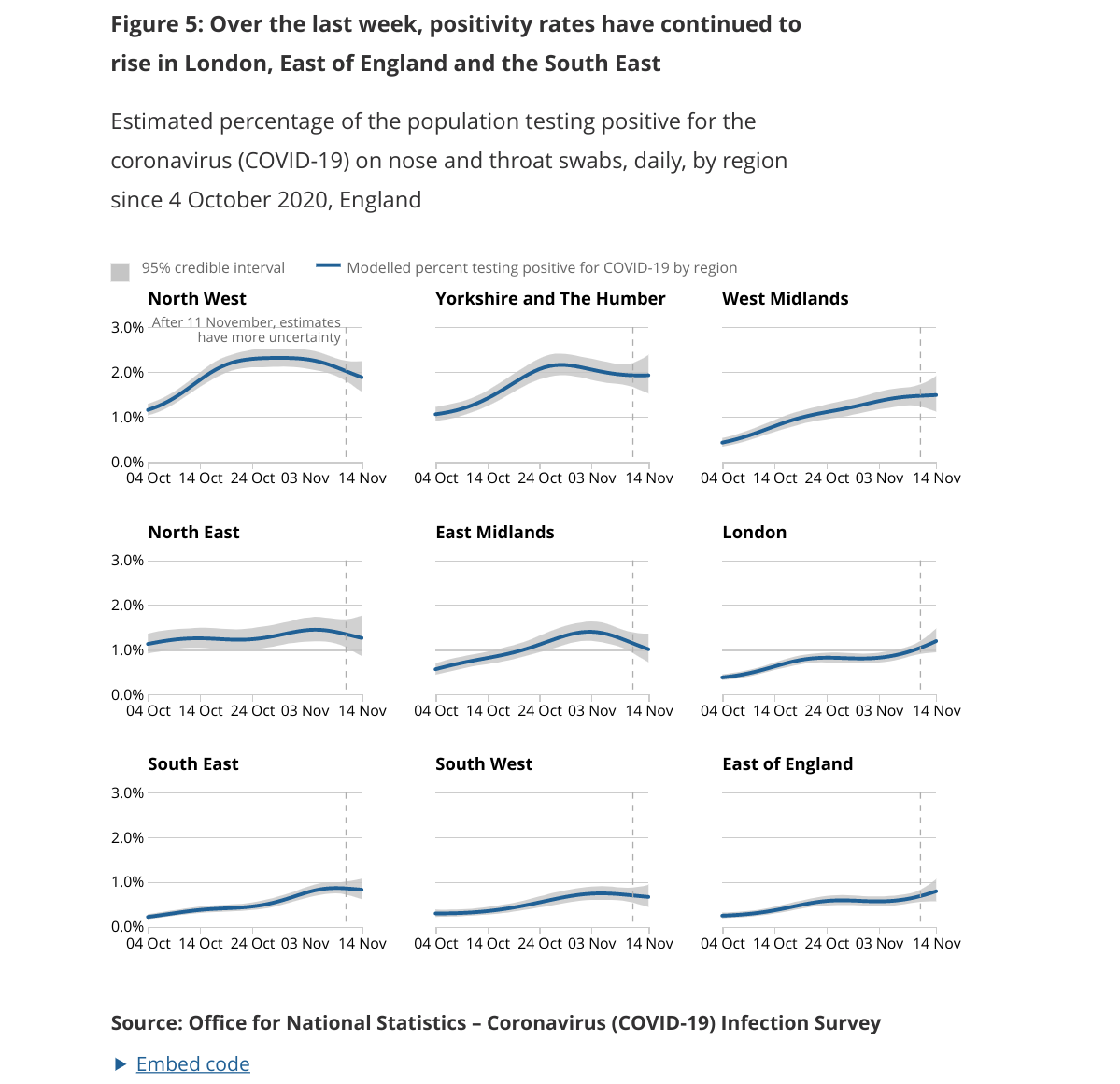THIS map reveals the areas that could be at risk of going into the highest tier of lockdown from next week.
Boris Johnson is set to outline the new measures that will come into effect from December 3, this afternoon.
The latest infections data for England shows 169 out of 315 local authority areas have seen a rise in cases in the last seven days up to November 16.
Areas such as Hull in Yorkshire, Swale in Kent, East Lindsey in Lincolnshire and Hartlepool in the North East are all expected to enter Tier 3 as they have the highest rates of infection in the country, PHE data shows.
Our interactive map reveals the the areas with highest infection rates in dark red, while the lighter the colour, the lower the number of cases per 100,000 of the population.
Tier 3 is expected to include a ban on households mixing indoors or out until a break over Christmas, pubs and restaurants only allowed to offer click and collect services an weddings still banned.
In a change from the previous tiered system, it’s expected gyms will be allowed to open in Tier 3.
The Government is expected to announce families will be able to meet up in “festive bubbles” for five days over Christmas in an early prezzie from the PM.
Shoppers should also be able to buy gifts and goodies in the high street next month.
While most people will be able to gear up for Christmas, some will be forced to adhere to strict restrictions due to a growing number of coronavirus cases.
‘End in tiers’

Just last week it was revealed that several local authorities were looking to enter into tough restrictions once lockdown is lifted.
Plans for a new stricter fourth tier have been abandoned, Matt Hancock said earlier today.
Most of the country is expected to return to the most stringent Tier 3 or high risk Tier 2.
Tier 2 will be “beefed up” and it is understood that pubs will only be allowed to serve booze alongside a “substantial meal” and punters will only be able to dine indoors with people they live with.
Pubs in Tier 3 will only be allowed to operate on a click and collect basis with no seating inside.
Data from the government’s coronavirus dashboard which calculates PHE data shows that Swale in Kent has 633.7 cases of the virus per 100,000 people.
Regional divide
Areas in the South of England had previously been in Tier 1 restrictions as cases remained low – but recent data shows that while Swale isn’t at the top of the list, it isn’t far behind from rates seen in northern parts of the country.
Hull continues to have the highest rate in England, with 1,817 new cases recorded in the seven days to November 16.
Data from the Covid dashboard states that it currently has 652.1 cases per 100,000.
This is down from rates last week – which sat at 754.5, cases in the areas are still high.
East Lindsey is in third place, where the rate has risen from 425.5 to 572.2, with 811 new cases.
Swale and East Lindsey saw the biggest week-on-week jump in rates, followed by Thanet (up from 393.2 to 520.0, with 738 new cases) and Boston (up from 343.4 to 466.0, with 327 new cases).


Hull has the highest rates of infection in England
The North of England had previously been home to the majority of coronavirus infections and experts had previously warned that the virus “wasn’t just an issue in the North”.
On Friday estimates from Sage suggested that the North West of England currently has a R rate between 0.8 and 1.
Figures published by the Office for National Statistics (ONS) today revealed that cases are decreasing in the North West.
The ONS stated that there are “substantial difference” in regional rates.
The official numbers body said: “Over the last week, infection rates have continued to increase in London, the East of England and the South East, however rates now appear to be decreasing in the North West and the East Midlands.
 Data from the ONS revealed that cases are levelling off in some regions in England
Data from the ONS revealed that cases are levelling off in some regions in England
“The highest Covid-19 infection rates remain in the North West and Yorkshire and the Humber.”
Areas in the South are now also seeing an increase in cases.
Areas such as Thanet in Kent feature in the top 10 of the most infected areas in the country.
It currently has 520 cases per 100,000 of the population – this is a steep increase from rates seen in the area last week when cases sat at 393.2 per 100,000.
Official data also states that regionally – many parts of the North have seen a decline in cases.
Scotland has had separate restrictions and on average has 144 cases per 100,000 a drop of six per cent from last week.
Northern Ireland has 210 cases per 100,000 and the rate the remains unchanged.
Wales has also seen a drop of 20 per cent and currently has 180 cases per 100,000.
The North West has also seen a drop of 13 per cent and currently has 334 cases per 100,000.
Yorkshire has also seen a drop of five per cent and has 429 cases per 100,000.
All other region have had an increase in cases; the West Midlands is up 15 per cent, the South West is up 12 per cent, the North East is up 11 per cent, East Midlands 7 per cent, the East – 29 per cent, London 26 per cent and the South East is also up 34 per cent.
Covid hotspots
Previous hotspots such as Leicester could once again find itself in the toughest restrictions with 486.1 cases per 100,000, while Blackburn with Darwen also facing tough restrictions with 470.3 cases per 100,000.
Boris Johnson will announce which tiers will apply in different parts of the country on Thursday, November 26.
At the start of the pandemic, London had high cases numbers and cases have been rising since early November.
The capital had previously faced tier 2 restrictions before the second national lockdown.
While cases in London have continued to rise since early November, there have been signs the national lockdown is helping cases to flatline across the country.
London Mayor Sadiq Khan urged Londoners to keep sticking to restrictions to help combat the virus.
He said: “Now more than ever it’s vital that we continue to follow the rules because we still have some very difficult months ahead in our fight against the virus.
“But I’m pleased to say that the end is finally coming into sight.
“We can see the light at the end of the tunnel because, with the positive news about the vaccines filtering through, and the incredible work of our scientists, we can afford to be hopeful and optimistic about the future and start to plan for life after the virus.”










